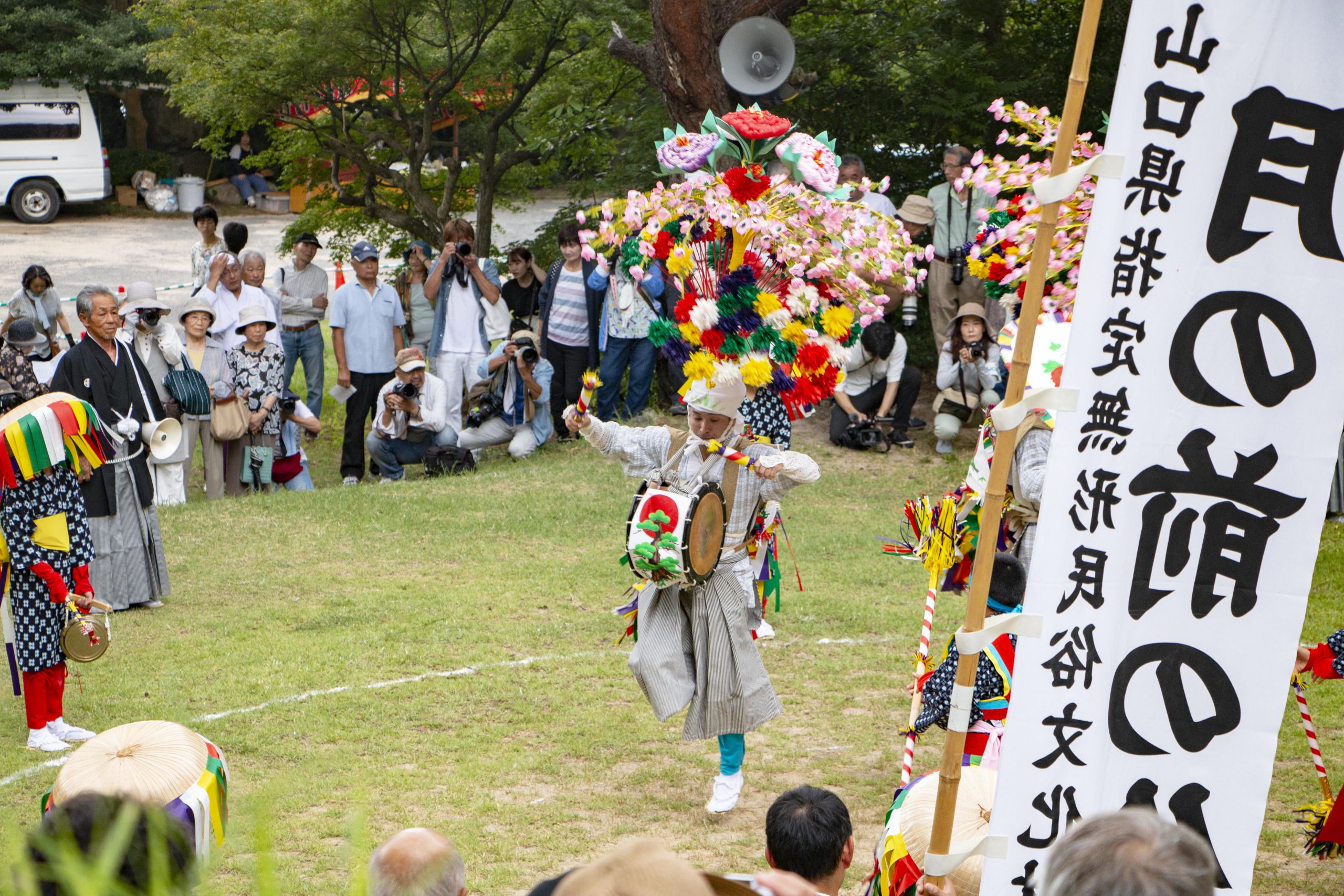- >
- Nanavi News
- >
- Akasaki Festival (2019.9.14-15)
Akasaki Festival (2019.9.14-15)
-
Last updated:
Sep 21, 2019
-
About the writer:
Nagato Tourism Convention Association

Inherited Dedication Performances
On September 14 (Sat.) and 15 (Sun.), the "Akasaki Festival" was held in the vicinity of Akasaki Shrine in Higashi-Fukagawa, Nagato City.
Among them, we report on the "Shiki Sanbaso," "Raku Odori," and "Yumoto Nanjo Odori" dedicated on the afternoon of the 15th, the day after the eve of the festival.

The annual "Akasaki Festival" is held around 1596 (Keicho 1), when a plague of cattle and horses broke out and people prayed to the Akasaki Shrine, which is dedicated to the guardian god of agriculture.
Starting last year, the date has been changed to the second Sunday in September.

At 1:00 p.m., the Akasaki Festival begins with the "Main Shrine Festival.
At the beginning, the weather was sunny and you could feel the lingering heat.

On a special stage, "Shiki Sanbaso" will be dedicated by the Shomyo City Shiki Sanbaso Preservation Society.


Shikisanbaso, which is always performed as the first part of the dedication performance, is a celebratory ancient dance performed by all three performers, all of whom are men.

The Akasaki Festival is known for attracting many photographers every year.
Many photographers visited Akasaki Shrine even before the festival started this year.

In the feeling of autumn
After the "Shikishiki Sanbaso" was over, dancers in gorgeous costumes were getting ready for the next dedication nearby.


Many people gather to catch a glimpse of the dedication at the Akasaki Shrine Raku-jiki, a nationally designated Important Tangible Folk Cultural Property.
By this time, the sun was hidden by clouds and the weather was pleasantly breezy and autumnal.

At 2:00 p.m., "Tsuki no mae no reigaku," one of the raku odori, a Prefectural Intangible Folk Cultural Asset, begins.

The way they started and changed the dance and the rhythm of the gong on the cue of their voices was so smooth that one did not feel any change in the rhythm of the dance.


Some of them even show their dances while flying nimbly.

The sound of the gong is pleasant, and the performance is not flashy, but it is still a spectacular one.
It is said to have developed from the Dengaku Odori dance, which originated from the rice planting ritual and the Mushiwari ritual.
Yumoto Nanjo Dance where voices resound
The second dedication was the "Yumoto Nanjo Odori," also a prefectural intangible folk cultural asset.

About 40 men in a row enter the raku plaza with shouts of "ooh" echoing through the air.


There were two children inside, echoing the sound of the gong in time with the adults.

Yumoto Nanjo Odori has songs, and the unique rhythm and the volume of the singers' voices completely changed the atmosphere of the place.
There are various theories, but it is believed that the festival began when the Iwakuni-Yoshikawa clan was fighting with the Nanjo clan, and dozens of Yoshiikawa clan members dressed up as dancers and danced their way into the castle to convey the honor of successfully capturing the Nanjo army.

423 years this year
The last performance dedicated was "Toranokowatashi," one of the raku dances.
The movement is loud and quick, a change from the "Melodrama before the Moon."


Today, two raku odori are dedicated each year, but in the early days there were five.
They have disappeared one by one over the ages.

Before each of the dedicated performing arts at this year's Akasaki Festival, Hisamitsu Ueda, chief priest of Iiyama Hachiman Shrine, gave a brief explanation.
In his closing remarks, he said, "It has become more and more difficult to gather performers, but I am glad to be able to carry on the tradition in this way again this year.

This year marks the 423rd year. We hope that this traditional dedication performance will be passed down from adults to children and lead to the future.
Related Links


